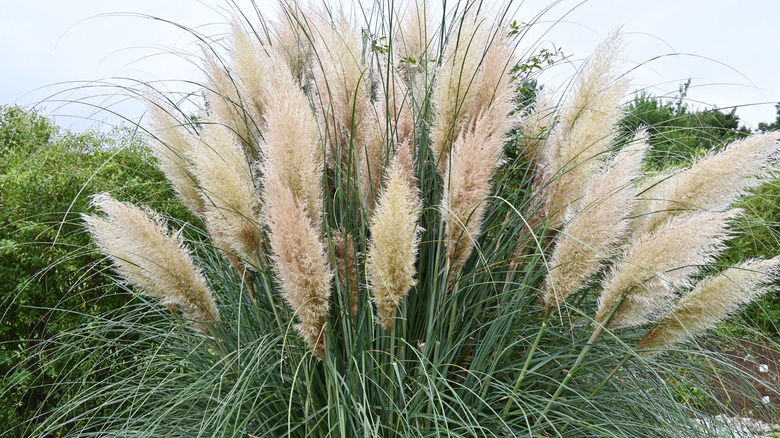Snakes Love This Plant You Might Already Be Growing In Your Yard
Snakes thrive in environments that offer protection, warmth, and easy access to prey. Dense ornamental grasses like pink pampas (Cortaderia selloana) deliver all three. This striking plant, with its tall plumes and razor-edged leaves, forms massive, impenetrable clumps that act as natural hideouts for both venomous and nonvenomous snakes.
Mature plants can grow up to 10 feet high and spread just as wide, forming thick clumps that are nearly impossible to see or walk through. Though it's grown for its dramatic beauty, pampas grass is also considered invasive in parts of the U.S. — particularly across the Southeast, where it's commonly used in landscaping ... and where many snake species are most active.
Pampas grass also creates a cool, shaded microclimate that helps cold-blooded reptiles like snakes regulate their body temperature. But it's not just the climate they're after. Rodents and insects often take up residence in the thick grass or burrow underneath, giving snakes a steady food supply. In fact, experts from the Washington Department of Fish & Wildlife note that tall grasses often conceal rodent burrows, which snakes readily occupy. That's why it's important to cut pampas grass back each year to help thin out the dense undergrowth that attracts both pests and the predators that hunt them.
Snake species drawn to pampas grass habitats
The types of snakes that take shelter in pampas grasses vary by region, but many are more common and closer to home than you might think. For ambush predators like the eastern diamondback rattlesnake, pampas grass gives them an edge. These snakes are known to coil quietly beneath thick vegetation, relying on their camouflage to stay hidden while they wait for a mouse, rabbit, or squirrel to pass by.
But they aren't the only ones using this plant for shelter. Across much of the country, nonvenomous snakes like ribbon snakes are also drawn to thick vegetation. These species often show up in backyards, raised bed gardens, and fields. In the East, copperheads (which are venomous) often stay close to areas with heavy ground cover. A large clump of pink pampas grass near a wooded edge could easily become one of their hiding spots. In the Northwest and mountain states, more secretive species like the rubber boa prefer grassy, damp areas, which are habitats that ornamental grass can sometimes mimic.
However, it's important to remember that snakes, while often feared, play a vital role in local ecosystems. In states like Washington, where only the western rattlesnake poses a venomous threat, most species are harmless and helpful. They control pests, contribute to biodiversity, and offer a glimpse into the complex workings of nature. Unless one presents a direct danger, snakes can and should be left alone and observed from a distance. If you're dealing with a snake problem, however, you may need to contact a pest control professional for assistance.

